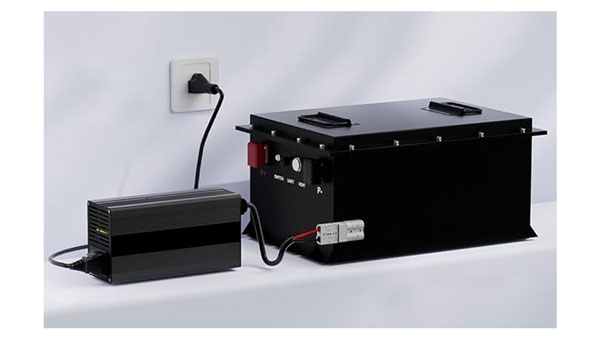Contents:
The State of Charge (SOC) of a lithium battery is a critical parameter that determines its remaining capacity. An incorrect SOC reading can result in underutilization or overuse, potentially damaging the battery. Correcting the SOC involves understanding battery dynamics, calibration techniques, and maintenance practices.

Common Causes of SOC Inaccuracy
-
Imbalanced Cells
Variations in voltage among cells can lead to inaccurate SOC readings.
-
Aging of the Battery
Over time, the battery's capacity diminishes, affecting SOC measurements.
-
Temperature Fluctuations
Extreme temperatures can distort the accuracy of SOC readings.
-
Faulty Battery Management System (BMS)
Malfunctions in the BMS can result in incorrect SOC estimates.
Steps to Fix SOC on Lithium Batteries
1. Calibrate the Battery Management System (BMS)
- Fully charge the battery to ensure the BMS recognizes the top voltage.
- Discharge the battery to its minimum safe voltage to set the low point.
2. Balance the Cells
- Use a balancing charger or an external balancer to equalize the voltage of all cells.
3. Update the SOC Algorithm
- Ensure the BMS software uses the latest algorithms optimized for your battery type.
4. Perform Regular Maintenance
- Monitor battery health and replace cells when necessary.
- Clean terminals to reduce resistance and improve accuracy.
5. Account for Temperature
- Install temperature sensors and ensure your BMS compensates for thermal variations.
6. Measure True Capacity
- Conduct a controlled charge-discharge cycle to calculate the battery’s real capacity and update it in the BMS.
Best Practices for SOC Management
By implementing these steps and best practices, you can effectively maintain and correct the SOC of your lithium batteries, ensuring longevity and consistent performance.
| Step |
Description |
| Use Accurate Instruments |
Invest in high-quality voltmeters and ammeters for better SOC estimation. |
| Monitor Cycles |
Track the number of cycles to understand degradation trends. |
| Avoid Overcharging |
Set safe voltage thresholds to protect battery health. |
| Store at Optimal SOC |
Store batteries at 50–70% SOC to minimize capacity loss during inactivity. |
| Regular Testing |
Perform periodic checks to ensure the SOC remains reliable. |
Advanced Techniques for SOC Optimization
-
Implement Adaptive SOC Algorithms
Modern battery management systems use adaptive algorithms that learn from usage patterns to provide more accurate SOC readings.
-
Use Coulomb Counting
Track the current entering and leaving the battery to calculate SOC more precisely. Combine this with periodic voltage checks for calibration.
-
Leverage AI and IoT Integration
Integrate Artificial Intelligence (AI) and Internet of Things (IoT) technologies to continuously monitor and optimize SOC in real time.
-
Consider Aging Compensation
Update the battery’s capacity data in the BMS to compensate for aging effects that degrade performance over time.
Example SOC Voltage Trends
SOC is typically measured as a function of voltage. The chart below shows how SOC changes with voltage under standard conditions:
Key Metrics for SOC Monitoring
To effectively monitor the State of Charge (SOC) and ensure the health of lithium batteries, it’s crucial to focus on the following metrics:
-
Voltage: Directly related to SOC, but affected by load and temperature.
-
Current: Used for coulomb counting to track energy in and out.
-
Temperature: Impacts chemical reactions and SOC accuracy.
-
Cycle Count: Tracks battery aging and performance decline.
SOC Monitoring Metrics Table
| Metric |
Definition |
Best Practices |
| Voltage |
Electrical potential difference across terminals. |
Measure under no-load conditions for accurate readings. |
| Current |
Flow of electric charge during charging/discharging. |
Use precise sensors for real-time monitoring. |
| Temperature |
Internal and external temperatures affecting battery performance. |
Keep within recommended limits using thermal management systems. |
| Cycle Count |
Number of full charge/discharge cycles completed. |
Monitor cycle life to estimate remaining capacity. |
| Capacity |
Amount of energy the battery can hold at a given point in time. |
Reassess periodically through controlled tests. |
SOC Monitoring Tools
To simplify SOC management, several tools and technologies can be leveraged:
-
Advanced Battery Management Systems (BMS): Provide real-time monitoring and control of SOC.
-
Battery Test Equipment: Devices like load testers and capacity analyzers ensure accurate measurements.
-
IoT-Enabled Sensors: Enable remote SOC monitoring and data analysis.
-
Software Solutions: Applications for visualizing SOC trends and managing data logs.
Investing in the right tools enhances SOC accuracy and supports long-term battery reliability.
Accurate State of Charge management is the cornerstone of effective lithium battery utilization. By addressing common challenges, employing advanced tools, and keeping up with emerging technologies, users can optimize battery performance, extend lifespan, and ensure safety. Proactive SOC management not only maximizes energy efficiency but also supports the broader goal of sustainability in energy systems.
FAQs
Inaccurate SOC readings can be caused by factors such as imbalanced cells, aging of the battery, temperature fluctuations, or a malfunctioning Battery Management System (BMS).
To calibrate the SOC, fully charge the battery to its maximum voltage, then discharge it to its minimum safe voltage. This allows the BMS to correctly recognize the battery's full charge range.
Sudden SOC fluctuations can occur due to rapid temperature changes, inconsistent charging practices, or external load conditions, which temporarily affect voltage and current readings.
It is recommended to recalibrate the SOC every few months or after significant changes in battery usage or performance, such as after a deep discharge or long periods of inactivity.
If the BMS is malfunctioning, it may lead to incorrect SOC readings. In such cases, it’s important to repair or replace the BMS to restore accurate SOC measurements.






